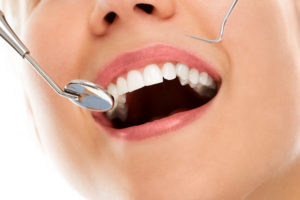Missing teeth can affect the functionality and appearance of your smile. A dental bridge is a popular restoration solution design to replace missing teeth and restore normal chewing and speaking ability. The process involves two stages: temporary dental and permanent bridges.
A temporary dental bridge is a short-term fix that provides essential protection and stability until the final restoration is place. If you’re considering getting a dental bridge, this guide will help you understand the role of temporary bridge teeth restoration and what to expect.
What is a Dental Bridge?
A dental bridge is a device with one or more artificial teeth made of porcelain or resin to replace missing teeth. Also known as filler or false teeth, this bridge is connect to crowns that anchor it to natural teeth.
The crown may cover two or more teeth to secure the bridge and fix artificial teeth in place. If you do not have natural teeth, the dentist may suggest implanting teeth on either side to hold the bridge in place.
What are the Types of Dental Bridges?

In general, dental bridges are of the following types:
-
Traditional Bridges
A traditional bridge includes creating a crown for the tooth or implant on either side of the missing tooth with a pontic in between. A Pontic is an artificial tooth replacing a missing tooth.
-
Cantilever Bridges
A dentist may recommend a cantilever bridge when only one adjacent tooth supports the pontic.
-
Maryland Bridges
Maryland or resin-bonded bridges have a metal or porcelain frame bonded to the back of adjacent teeth.
-
Implant Supported Bridges
As the name suggests, an implant-supported bridge is fixed in place with the help of dental implants instead of natural teeth.

What is the Purpose of a Temporary Dental Bridge?
A temporary bridge is a potential solution for patients who have lost one or more teeth and require a permanent dental restoration. The temporary bridge teeth are design to balance the teeth alignment, prevent shifting, and protect the gums and teeth from further damage.
A temporary bridge tooth fills the gap between missing teeth and preserves the natural shape of your face. The bridge allows you to speak and chew appropriately until the permanent restoration is ready.
Apart from providing functional benefits, a temporary dental bridge is vital for maintaining oral hygiene. It prevents food particles from lodging in the gaps, which can lead to plaque buildup and other oral health issues.
What Materials Are Used in Temporary Bridges?
Understanding the material of a temporary bridge is also essential, as it will provide insight into its purpose.
Usually, temporary dental bridges are made up of acrylic resin or composite. These materials are ideal as they can be easily adjusted and shaped.
In addition, they provide increased durability and comfort. Acrylic resin and composite also help maintain dental alignment and function while the permanent bridge is prepare.
Although for a few weeks, a temporary bridge should be select to withstand daily activities and provide a temporary yet reliable solution.
What is the Procedure for Temporary Dental Bridge Placement?
Placing a temporary dental bridge is easy and involves only a few steps. It involves:
1: Preparing the Abutment Teeth
- The adjacent teeth are reshape to accommodate the bridge.
2: Taking Impressions
- Your dentist will take an impression of the prepared teeth, serving as a blueprint for the temporary and permanent bridges.
3: Placing the Temporary Bridge
- The temporary bridge is fit over the prepare teeth.
- A temporary adhesive holds it until the final restoration is ready.
4: Wearing the Temporary Bridge
- Depending on your treatment plan, the bridge remains in place for several weeks to a month.
The bridge is held in place until the permanent solution is ready. The duration may depend on the patient’s condition and dental treatment plan. The duration may generally last a few weeks or more than a month for certain patients.
Caring for Your Temporary Dental Bridge
To extend the lifespan of your temporary bridge teeth, follow these oral care tips:
- Brush gently twice a day using a soft-bristled toothbrush and non-abrasive toothpaste.
- Floss carefully around the bridge to prevent plaque buildup, but avoid pulling the floss upwards, which can dislodge the bridge.
- Avoid hard or sticky foods like caramel, chewing gum, or crunchy snacks that can loosen the bridge.
- Limit staining foods and drinks such as coffee, tea, and wine to keep the temporary bridge looking clean.
- Visit your dentist regularly to monitor your bridge and oral health.
Takeaway
A temporary dental bridge is a transient solution to fill the gap between missing teeth until the permanent dental bridge is ready. The bridge secures the gap and protects it from infection or plaque buildup due to food particles. In addition, it also maintains the alignment and shape of your teeth.
If you’re considering a dental bridge, consult Hopkins Family Dentistry to explore options.
Whether you have missing teeth or are looking for an expert opinion on your oral health condition, our experienced team of dentists in Hopkins, MN, is available 24/7 to guide you.
Schedule an appointment with us today or call (952) 935-2121.
You can also visit us at 1919 Mainstreet, Hopkins, MN,







